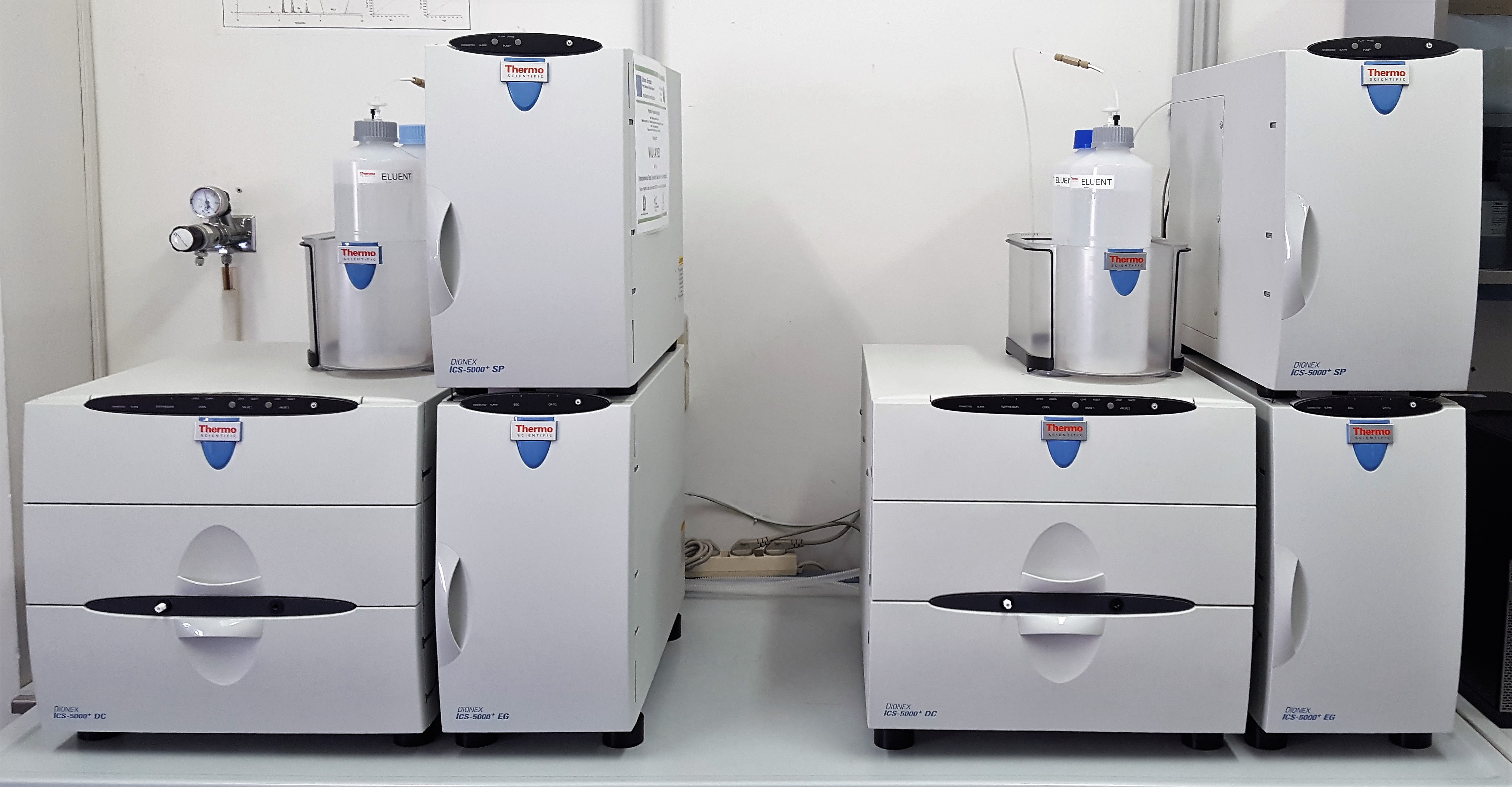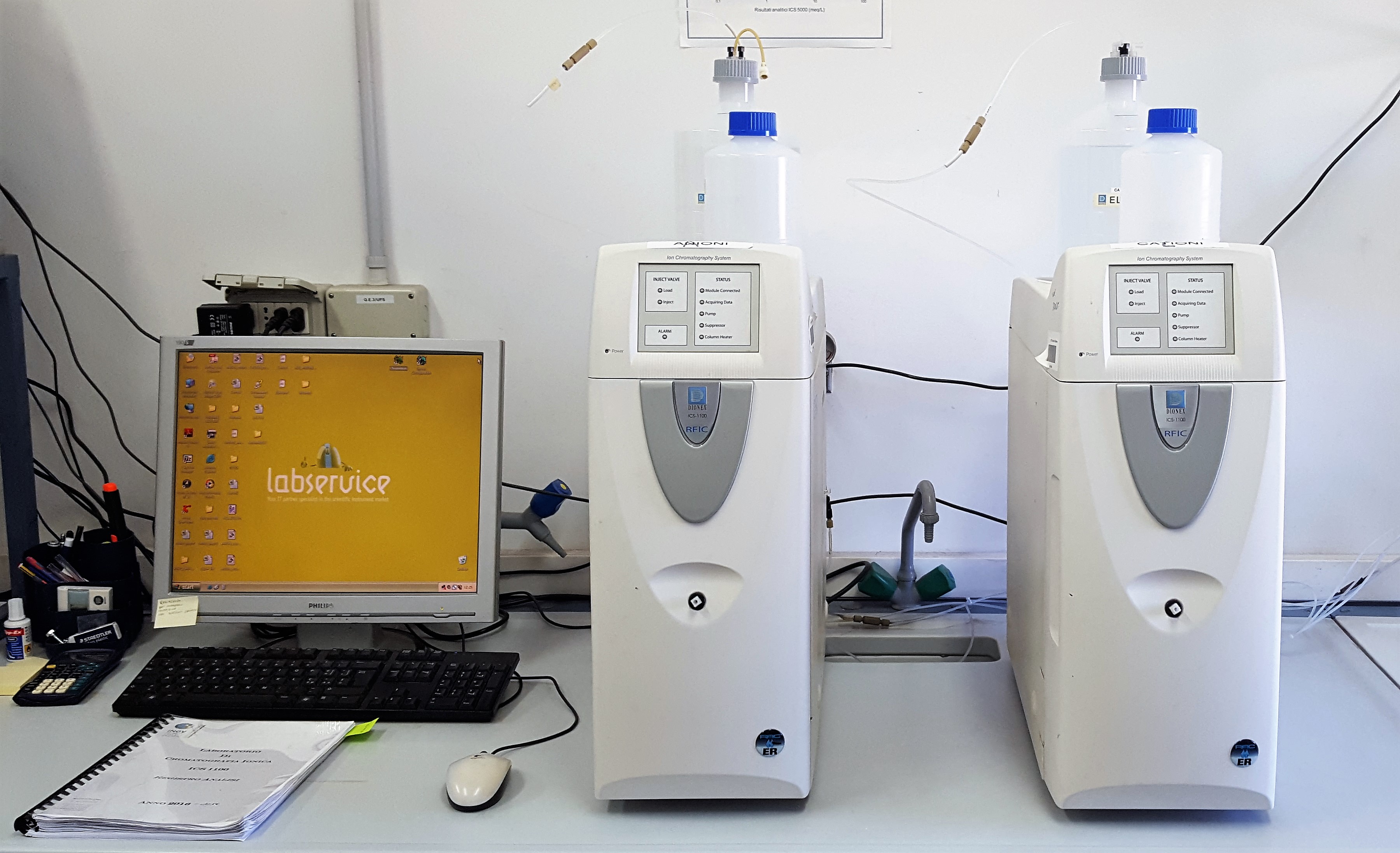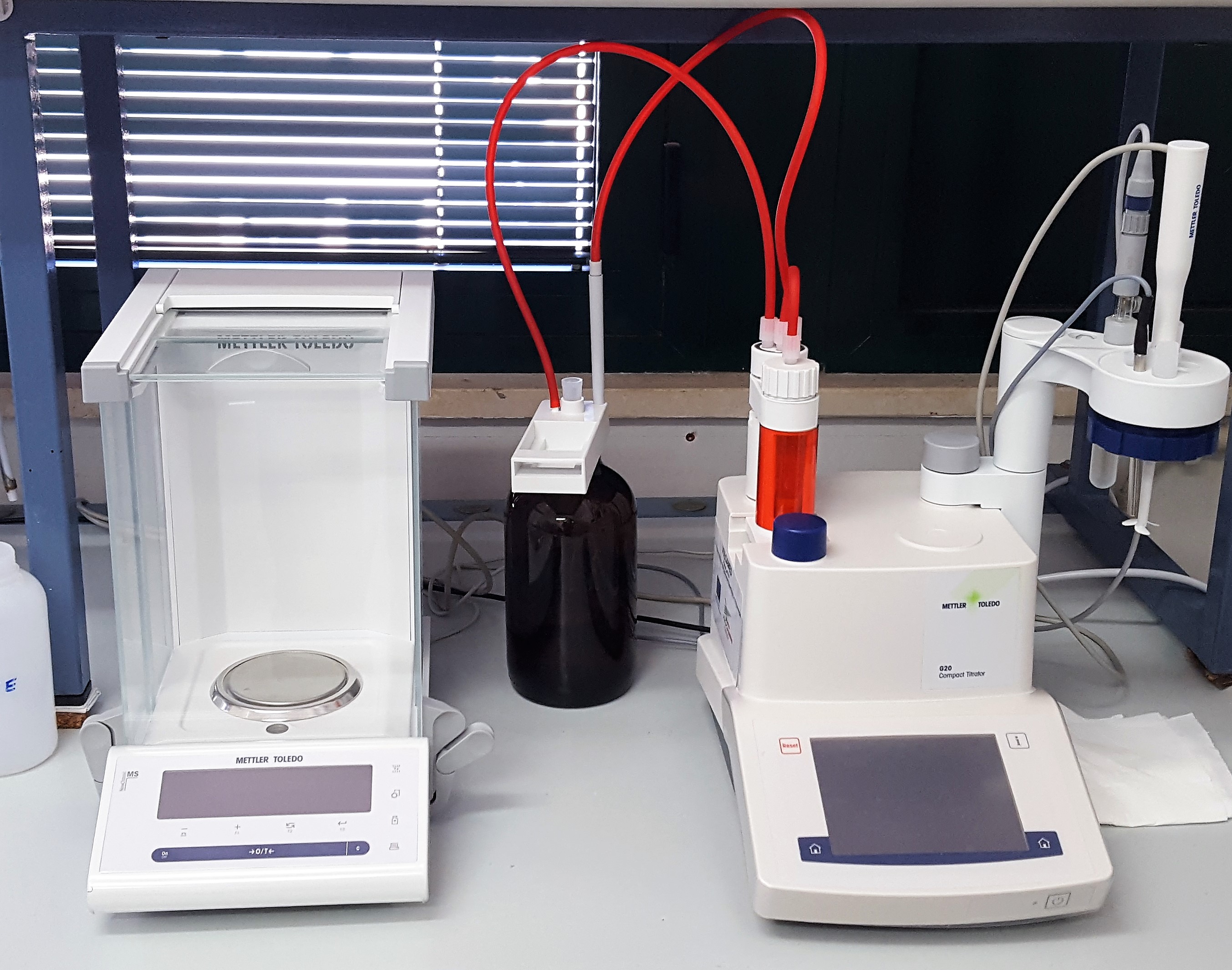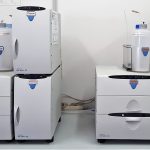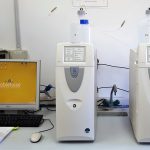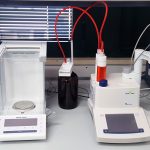Laboratory of Ion Chromatography (IC)
Head of Geochemical Laboratories Unit: Manfredi LONGO
E-mail: manfredi.longo@ingv.it
Referent of Water Chemistry Laboratory: Sergio BELLOMO
E-mail:sergio.bellomo@ingv.it
E-mail:laboratoriodicromatografiaionica.pa@ingv.it
Laboratory of Ion Chromatography
The laboratory carries out chemical analysis aimed at determining the abundances of the major constituents in aqueous solutions, through the technique of Ion Chromatography and through the acid-base titration.
Principle of the method
The ion chromatography (IC) is an analytical technique used for the determination of the major constituents under ionic form in aqueous samples.
The analytical method is based on ion exchange between a mobile phase consisting of the eluant, which transports the sample, and a stationary phase at the solid-state (ion-exchange resins).
The mobile phase consists of:
- -a carbonate solution and sodium bicarbonate (Na2CO3/NaHCO3) or potassium hydroxide (KOH) as regards anions;
- -a Methanesulphonic acid solution (MSA) as regards cations.
The stationary phase consists of a polymeric lattice of divinylbenzene and ethylvinylbenzene. The negative or positive (active center) ions are fixed to aromatic rings.
The functional groups are constituted by:
- -quaternary amino groups –N(CH3)3+ as regards anions;
- -sulfonic groups –SO3– carboxyl groups –COO– as regards cations.
Applications
Some of the ion chromatography applications:
- chemical analysis of drinking water for the determination of the major constituents (including any pollutants).
- chemical analysis of natural waters (groundwater, thermal, rain, marine) for research purposes and geochemical and environmental monitoring.
- analysis of fumaroles fluids, sampled through the interrupters method Giggenbach.
- determination of acid species, issued by volcanic plumes sampled using alkaline traps.
Instrumentation
The ion chromatography laboratory is equipped with four instruments:
A. two chromatographs Thermo Scientific Dionex ICS-5000+(Fig.1);
B. two chromatographs ICS-1100 (Fig.2).
for determining the concentration of the following analytes: lithium, sodium, potassium, calcium, magnesium, ammonium, fluorides, chlorides, nitrates, nitrites, sulphates and phosphates (Prano et al., 2015). The analysis time of each analytical race varies as a function of the instrumental conditions (12-35 minutes).
Instrument configuration
A.The Thermo Scientific Dionex ICS-5000+chromatographs are each composed of three modules:
- a single pump system double piston;
- an eluent generator with RFIC module RFIC;
- integrated module chromatograph / detector, with two separate zones and temperature accurately controller.
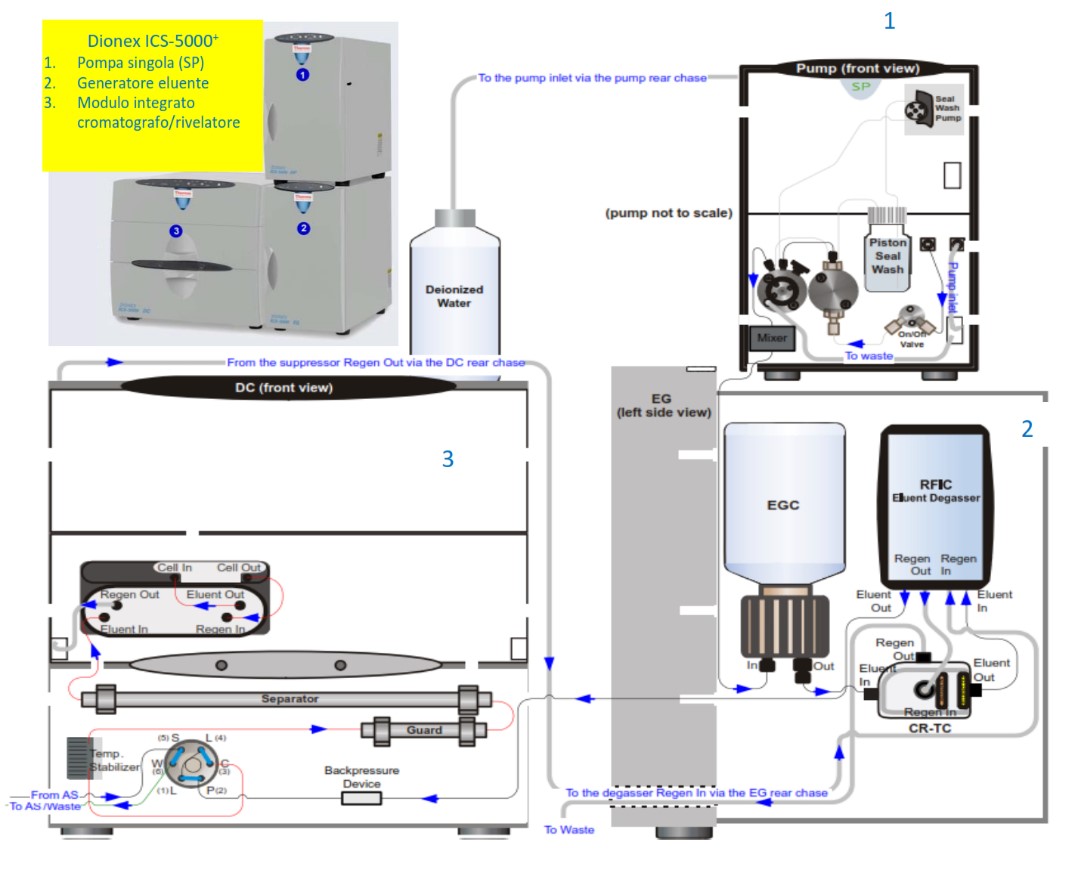
Scheme Dionex ICS-5000+.
Communication Interface with modules is via PC, using the software Chromeleon® Chromatography Data System Version 7.
Configuration for the determination of anions
Eluent: KOH produced by an eluent generator (EG) equipped with a Dionex cartridge EGC 500 KOH and a CR-500 ATC trap;
| Pre-column: Dionex IonPac AG19-4µm (4 x 50 mm) |
| Analytical Column: Dionex IonPac AS19-4µm (4 x 250 mm) |
| Suppressor: ASRS-500 4 mm e CRD 200 4 mm RFIC |
| Detector: Detector: conductivity cell |
The column Dionex IonPac AS19-4µm, in combination with the pre-column Dionex IonPac AG19-4µm, has been designed to analyze inorganic anions using potassium hydroxide as eluent, both in isocratic flux and gradient conditions.
The AS19-4µm, consisting of particles with a 4 micron diameter, has a high capacity of anion exchange 240 µeq/column and therefore it has a higher density of exchange than quaternary ammonium groups.
Configuration for cations determination
Eluent: Methanesulphonic acid (MSA)produced by an eluent generator (EG) equipped with a Dionex EGC 500 MSA and a CR-500 CTC trap.
| Pre-column: Dionex IonPac CG16 (5 x 50 mm) |
| Analytical Column: Dionex IonPac CS16 (5 x 250 mm) |
| Suppressor: CSRS-500 4 mm e CRD 200 4 mm RFIC |
| Detector: Detector: conductivity cell |
The Dionex IonPac CS16 column in combination with the Dionex IonPac CG16 pre-column, has been designed for the analysis of inorganic cations using methane sulfonic acid as eluent, both in isocratic flux and gradient conditions.
The CS16, consisting of particles of 5µm diameter, has a high capacity of cation exchange, 8400 meq/Column and so it has a higher density than carboxylic acid groups.
B.The Dionex ICS-1100 chromatographs are composed of an integrated system, containing a double-piston pump, a six-way injection valve, a thermostatted column compartment and a conductivity cell detector.
Communication Interface with Dionex modules is via PC, using the software Chromeleon® Chromatography Data System Version 6.8.
Configuration for the determination of anions
The mobile phase consists of a solution 8*10-3M Na2CO3/1*10-3M NaHCO3 prepared manually.
| Pre-column: Dionex IonPac AG14A (4 x 50 mm) |
| Analytical Column: Dionex IonPac AS14A (4 x 250 mm) |
| Suppressor: ASRS-500, 4 mm |
| Detector: Detector: conductivity cell. |
The AS14A consisting of particles of 7µm has a capacity of 65 meq/column anion exchange, with carboxylic acid groups.
Configuration for the determination of cations
The mobile phase consists of a solution 18*10-3M di MSA methanesulphonic acid), prepared manually.
| Pre-column: Dionex IonPac CG12A (4 x 50 mm) |
| Analytical Column: Dionex IonPac CS12A (4 x 250 mm) |
| Suppressor: CSRS-500, 4 mm |
| Detector: Detector: conductivity cell. |
The CS12A consisting of particles of 7µm diameter, has a capacity of 2.8 meq/Column cation exchange, with carboxylic acid groups.
Calibration
The instrument calibration is performed through the introduction of multi-elementary mixtures, obtained by gravimetric dilution of a mother mixture prepared with standard solutions certified by Merck KGaA.
In order to construct the calibration curves, at least 6 calibration levels, with different concentrations, are used. It is therefore possible to determine the calibration curve for each species.

Example of calibration curves.
Precision and Accuracy
The accuracy of the instrument can be estimated analyzing the same sample multiple times and estimating the relative standard deviation for each species. The R.S.D. values are ≤ all’1% for concentrations higher than 0,1 meq/L and ≥ and 5% for lower concentrations.
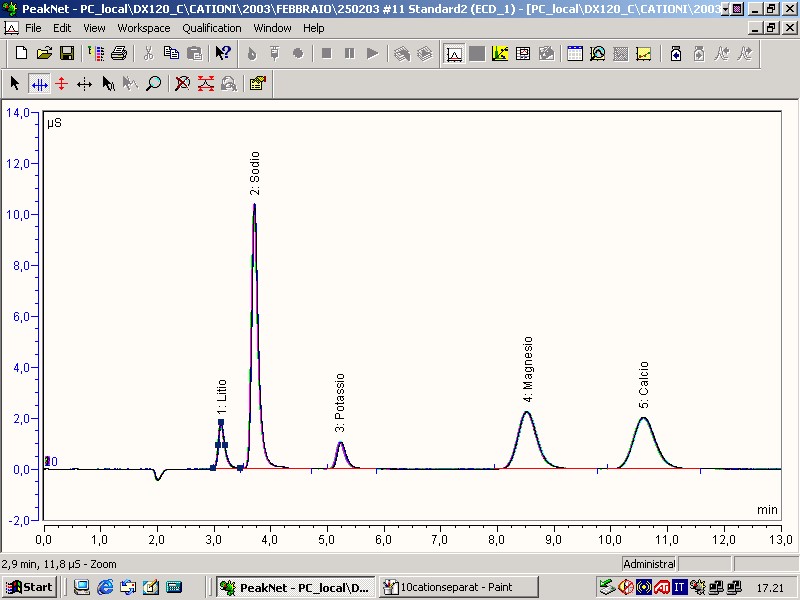
Overlay of 10 chromatograms of the same sample.
To determine the accuracy of the method you need to analyze a certified sample (reference material), whose composition is known, comparing the analytical results with the values shown in the sample certificate.
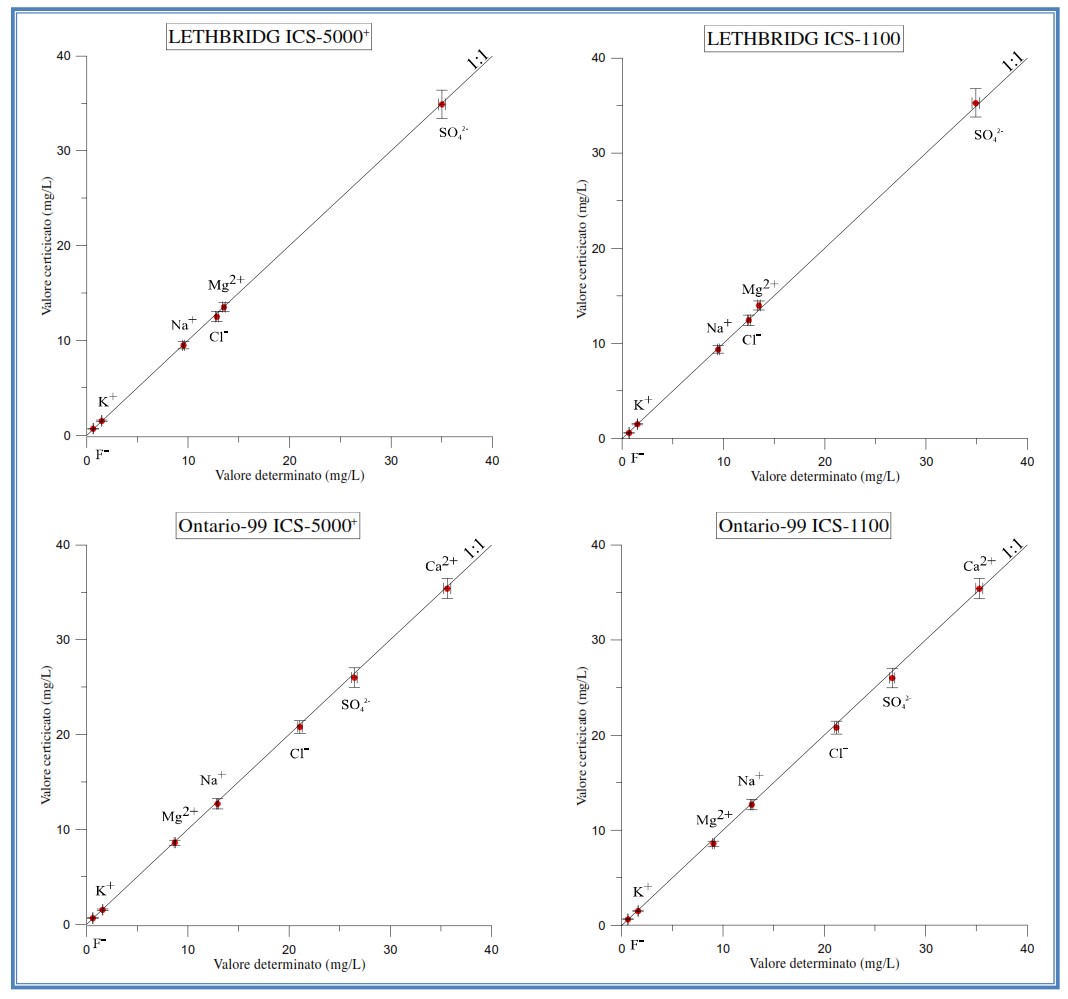
Comparison of analytical results and expected values of two samples certified for both instrument configurations.
Titrations
For the determination of the total alkalinity and the carbonate species (HCO3–; CO32-), according to the principle of neutralization of an acid-base reaction, a titrator G20, connected to a precision balance MS250DU, is used; both of them are produced by METTLER TOLEDO (fig. 7). The communication interface with the instruments is via PC using the software LabX.
Charge accounts
For many water samples, the charge balance can be used to verify the principle of solutions electroneutrality. It represents a control of the quality of analyses.

References
– V. Prano, M. Liotta, S. Francofonte. Determinazione di anioni inorganici e fosfati in acque naturali mediante cromatografia ionica: applicazioni della colonna Dionex IonPac AS19-4µm. ISSN 2039-7941 Anno 2015_Numero 323.
URL: http://www.ingv.it/editoria/rapporti/2015/rapporto323/
-Instrumentation manuals






